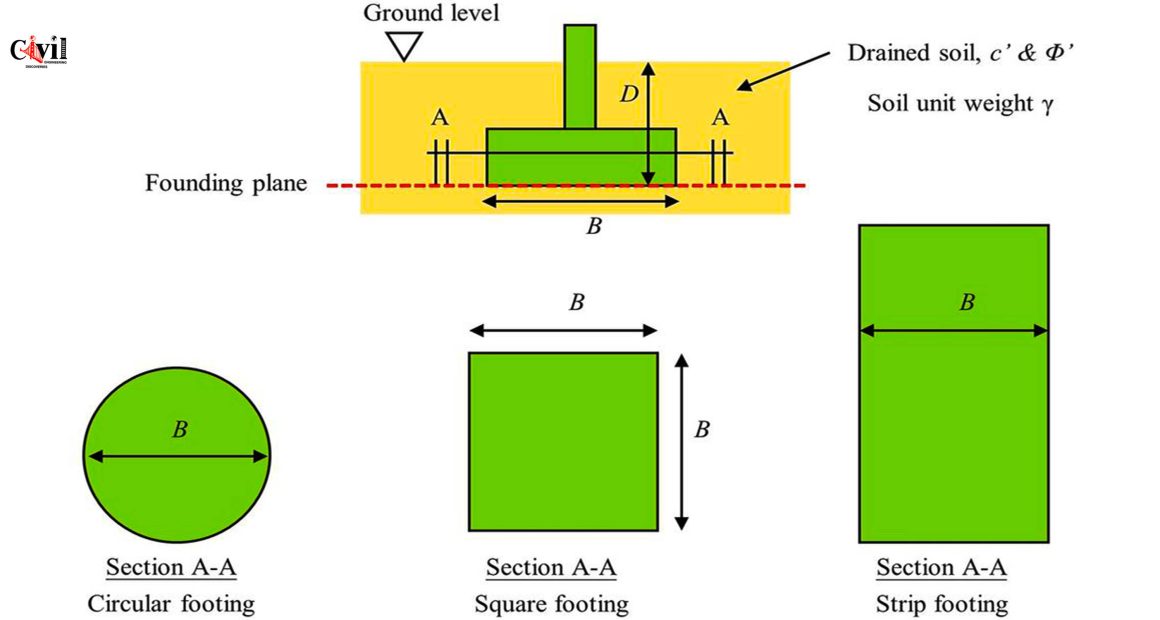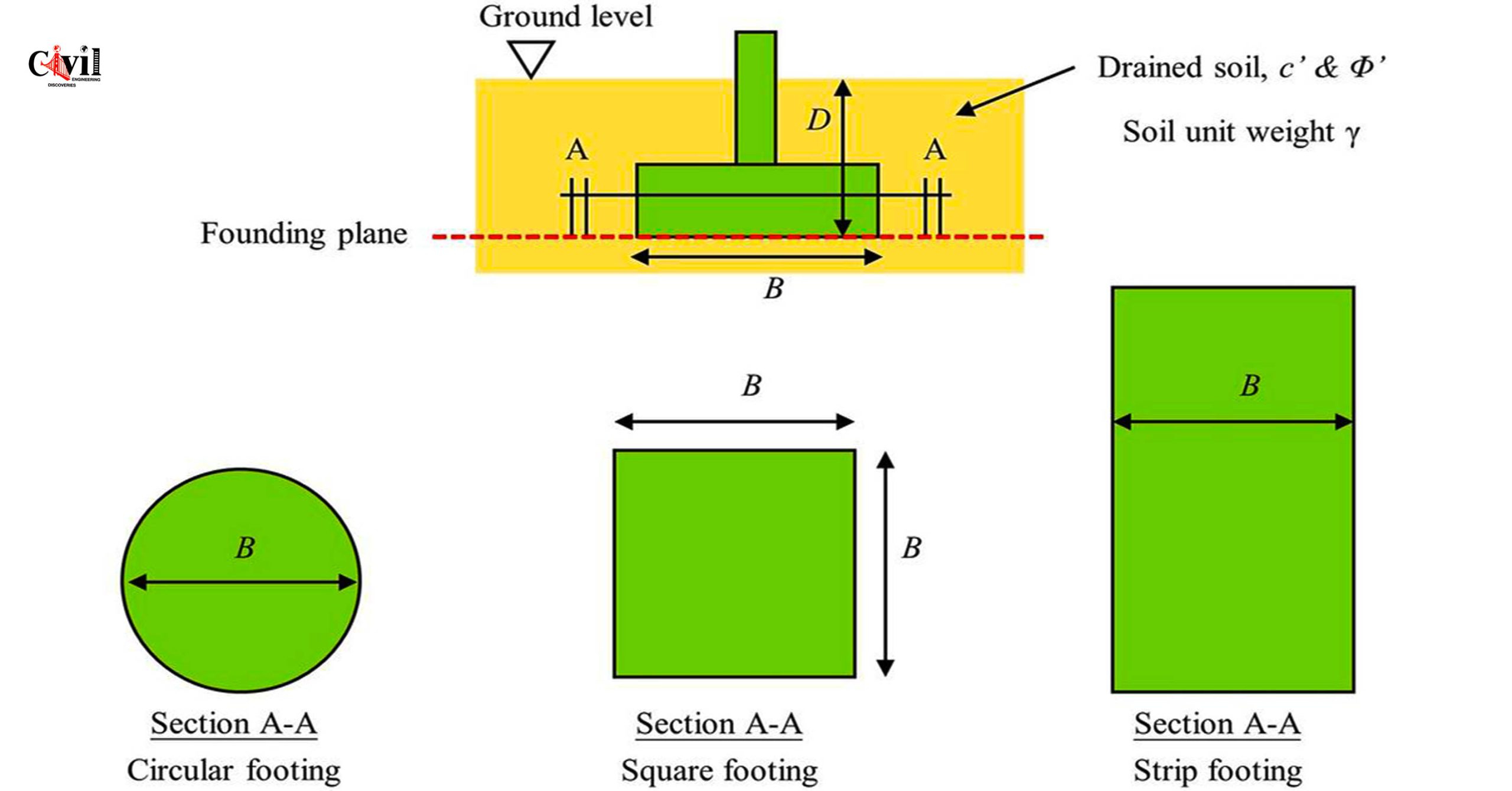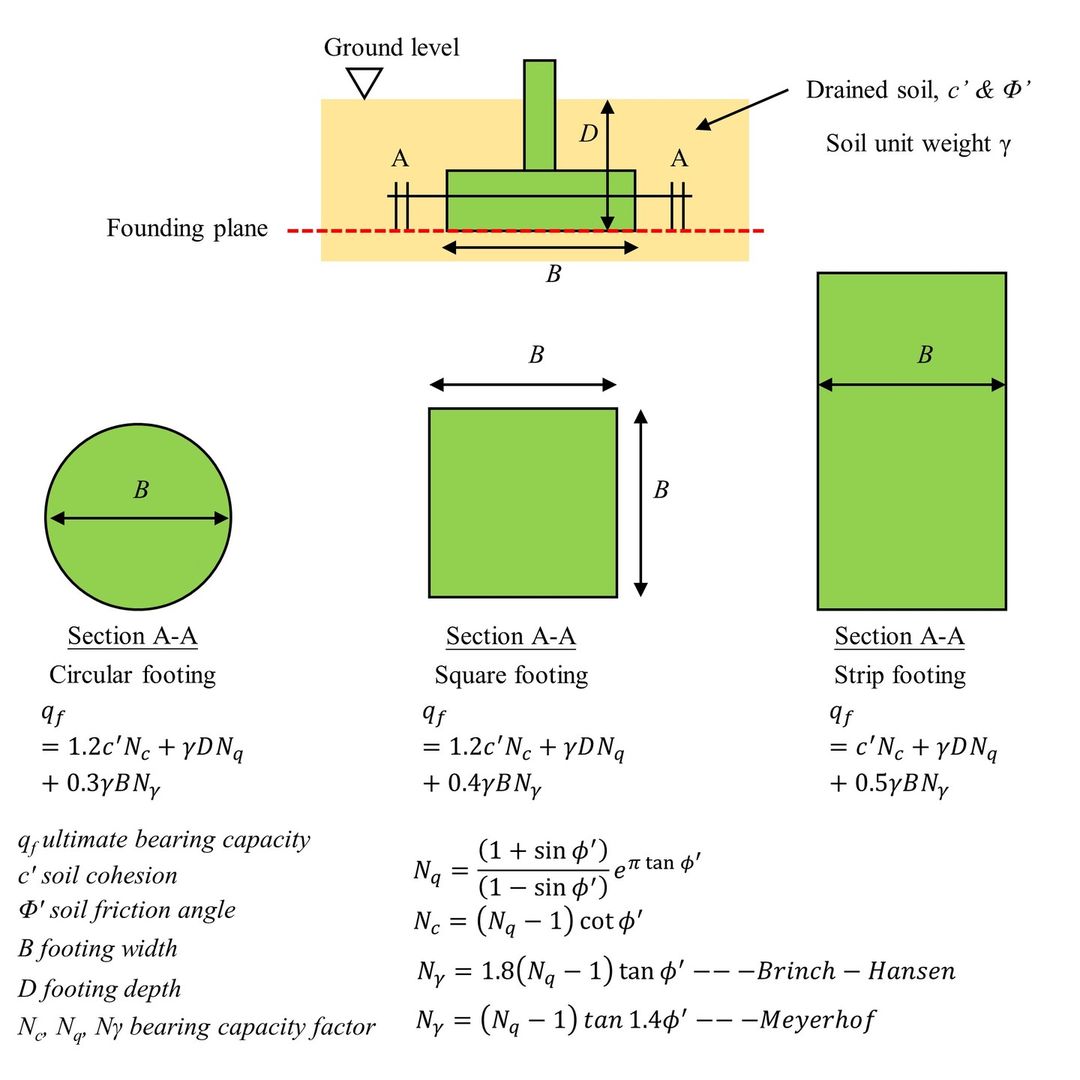The ultimate bearing capacity of shallow foundations is a critical factor in construction and civil engineering. Understanding how to calculate it ensures the safety and stability of any structure. One of the most reliable methods for determining this is Terzaghi’s formula, which provides an empirical approach tailored to different footing shapes.
Types of Footing Shapes and Their Formulas
Shallow foundations come in different shapes, and the calculation of their bearing capacity depends on the specific type of footing. Terzaghi’s formula offers empirical formulas for three primary footing shapes:
- Strip Footing
- Square Footing
- Circular Footing
Each of these has a unique set of calculations based on its shape and the soil conditions. These formulas are particularly useful when the footing is located above the water table.
Influence of Soil Conditions on Bearing Capacity
For Terzaghi’s formulas to be accurate, the soil must meet certain conditions. Specifically, the soil should be dense and stiff. Soil that is loose or weak may result in a reduced bearing capacity, which could lead to foundation failure.
Key Soil Properties That Affect Bearing Capacity
- Shear Strength Parameters: The cohesion and friction angle of the soil play a crucial role in determining the bearing capacity. These parameters must be accurately measured to ensure a reliable calculation. It is essential to use data from a reliable source, such as a detailed soil investigation, to get the true values of these properties.
The Importance of Soil Investigations
Before beginning any construction project, performing a soil investigation is vital. This provides essential information about the soil’s shear strength and other properties. Using accurate data from these investigations leads to a more precise application of Terzaghi’s formula, ensuring the structure’s stability.
Conclusion
Calculating the ultimate bearing capacity of shallow foundations is crucial in construction. By using Terzaghi’s formula, engineers can ensure that the foundation is strong enough to support the structure. However, the accuracy of these calculations depends heavily on the soil’s properties and the footing shape. Always ensure the soil is dense and stiff, and the shear strength parameters are obtained from a trusted source.
Click Here To See How To Calculate Volume Of Concrete For A Trapezoidal Footing







